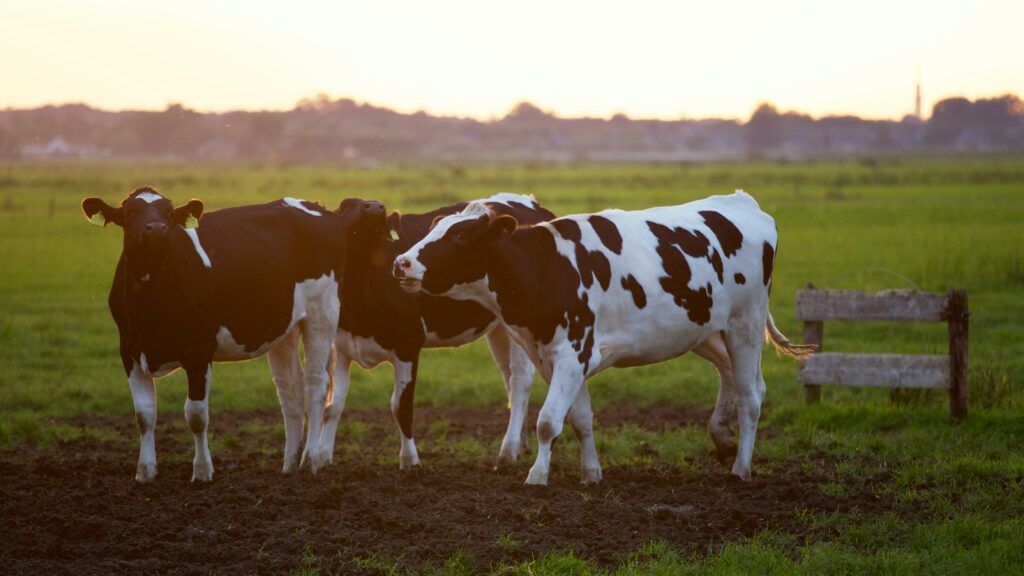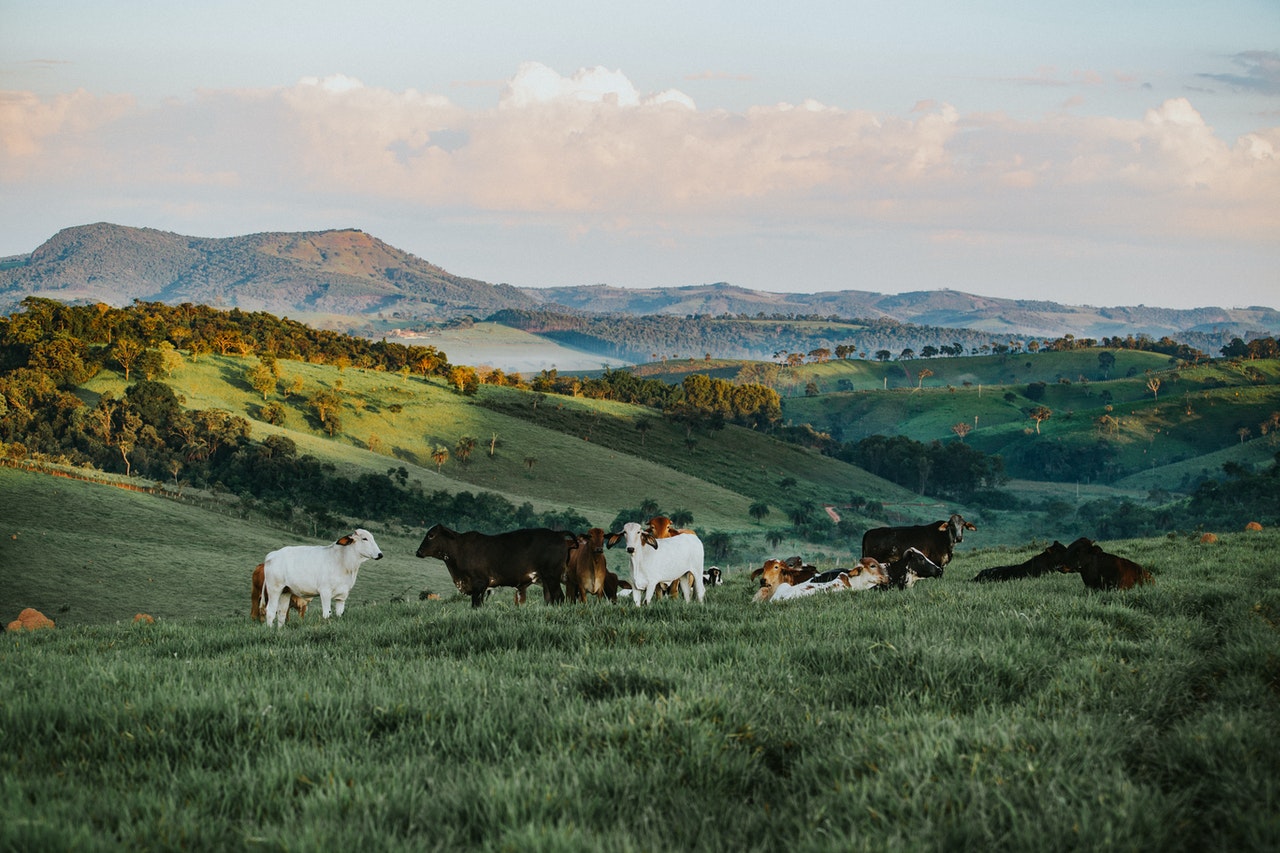Introduction:
India being an agricultural country, the cattle plays a predominant role as a backbone of the agricultural sector. The Britannica defines the term “Cattle” as domesticated bovine farm animals raised for their milk, meat, hide, transport, power, and entertainment. Cattle include cows, bulls, oxen, or calves. In India, cows and bulls are revered as sacred. The cow, who is worshipped as Vahana of Lord Krishna and Bull or ‘Nandi’ as Vahana of Lord Shiva, holds a supreme place among the other deities in Hindu culture.
Significantly, India has the largest bovine population, above 300 million, along with the biodiversity of 43 indigenous cattle breeds and 13 Buffalo breeds.
Notwithstanding, the cow is considered sacred, the cows, bulls, calves, buffaloes, and oxen in India are lamentable.

Human beings have become mere mercenaries who would go to any extent to extract profit from the bovines. India, which is the world’s largest milk producer, contributes 22% to global production and has a dairy market valued at INR 11,357 Billion in the year 2020. However, behind this booming dairy industry lies a grim reality, i.e., the success is achieved at the cost of the lives of the cows and buffaloes. According to a report by PETA India, it has been found out that many cows and buffaloes, which are explicitly used for dairy purposes, are manipulated genetically by way of injecting with synthetic growth hormones so that they can have huge udders.
These udders contribute to producing a massive quantity of milk than what they would produce naturally. Also, it is reported that some of the farmers in India are engaged in the wrongful act of injecting the cows with oxytocin, which is not just illegal but an unnatural as well as a harmful way to boost the production of milk.
Not only this, the owners of these cows and buffaloes fail to provide them with adequate food and shelter; instead, they are found roaming in the middle of the street searching for food. A common sight in India is watching the cattle eat from roadside garbage, which consists of unhygienic stuff. The pathetic condition of the cattle does not end here; whenever any owner feels that these bovines are unprofitable to them, they sell them to slaughterhouses.
Though laws are there to prevent the bovines from such suffering, such as the Prevention of Cruelty to Animals Act, 1960, respective States have their own Acts to prevent the slaughter of cows and buffaloes, the directive of the Supreme Court in support of anti-slaughter laws, their suffering has not ceased to exist. An analysis of the problem of stray cattle and the schemes launched by the government in the purview of the prevailing scenario of the condition of the cattle has been done in this article.
The problem of Stray Cattle:

It is pertinent to note that the owners abandon cattle that have lost their utility. These cattle are called stray cattle who roam in the streets in search of food or are sighted sitting in the middle of the street as they have no place or shelter. Cattle are kept in a shelter only till the time they provide benefit to their owners. It is infelicitous that the cows and bulls who are worshipped as deities are forsaken or neglected. Cattle are an important resource, support the agricultural system, and thereby contribute towards nutritional security. In January 2020, the Union Ministry of Fisheries, Animal Husbandry, and Dairying had released the 20th Livestock Census, which stated that there are over 5 million stray cattle in India.
In 2012, a livestock census was conducted in the state of Madhya Pradesh, and it is astonishing to know that the state has a population of 19.7 million cows and bulls, which is one cow for every third person. According to the director of Directorate of Animal Husbandry and Veterinary Services, Madhya Pradesh, approximately 50% of the entire cattle population is in the non-breedable category and could be called unproductive, in the state of MP.” These stray cattle are abandoned, and they have to sustain themselves on their own.
Rajasthan houses a population of 13 million cattle. Despite appointing committees by the Government of Madhya Pradesh to take into consideration the issue of stray cattle and proposal of stringent punishment for abandoning cattle, it’s often found to be insurmountable to recognize the owners of the deserted cattle. Moreover, farmers can barely feed themselves, let alone their animals, assailed by drought, famine, and flood-like calamities. In such cases, they are left with no other option but to abandon their uneconomic cattle.
It is to be noted that, in the past few decades, the superfluous focus has been given to crossbreeding, and the indigenous ones are neglected. This is also one of the factors contributing to the population of stray cattle. The problem of stray cattle is mostly in cities as they become a cause of concern as well as sometimes become a menace for the transport system and the general public.
However, the abandoned cattle in villages raid crops to feed themselves, thereby causing damage to crops and the farmers. It has been asserted by the owners of these cattle, including marginal farmers, that once they become infit, their rearing is economically non-beneficial. Thus, they are either deserted completely or are sold to slaughterhouses to get monetary gain from their flesh. The government has intervened numerous times to solve the issue relating to stray cattle. This draws our attention towards the need to examine whether these cattle are really unfit or useless as they are called so.
Gaushalas for the protection of the Cattle

A Goshala or Gaushala is a protective shelter for cows in India. According to Merriam Webster, Gaushala is a shelter provided to the homeless or unwanted cattle that often also serve as a center for breed improvement and study of bovine nutrition and welfare. The term Goshala is composed of two Sanskrit terms, “go” or “cow” and “shala” or shelter, i.e., “Goshala,” which is also a Sanskrit term. Gaushala is a place where cattle are treated with respect and dignity. In ancient India, uneconomic, old, deserted cattle were given in Gaushalas.
As per the solution given by the Government authorities, to cater to the need of an increasing number of stray cattle, the only viable option is to send them to the Gaushalas. This can be induced from the initiative “Rashtriya Gokul Mission,” which the Central Government has undertaken to support Gaushalas and raise their numbers so that the stray cattle can be directed towards Gaushalas (Cow Shelters).
What is Rashtriya Gokul Mission (RGM)
The Rashtriya Gokul Mission was launched in December 2014, with an investment of Rs 2025 crore for the development and conservation of indigenous breeds through selective breeding in the breeding tract and genetic up-gradation of nondescript bovine population. The scheme consists of two main elements viz. National Programme for Bovine Breeding (NPBB) and National Mission on Bovine Productivity (NMBP).
Objectives of the Mission
The Rashtriya Gokul Mission has been launched to achieve the following objectives:
- To develop and conserve indigenous breeds.
- To breed improvement program for indigenous breeds to improve the genetic makeup and increase the stock.
- To enhance milk production and productivity of bovine population by increasing disease-free high genetic merit female population and check on the spread of diseases.
- To upgrade nondescript cattle using elite indigenous breeds like Gir, Sahiwal, Rathi, Deoni, Tharparkar, Red Sindhi.
- To distribute disease-free high genetic merit bulls for natural service.
- To bring all breedable females under organized breeding through AI or natural service using germplasm of high genetic merits.
- Arranging quality Artificial Insemination (AI) services at farmer’s doorstep.
- Creating an e-market portal for bovine germplasm for connecting breeders and farmers.
- Increasing trade of livestock and livestock products by meeting out sanitary and photo sanitary (SPS) issues.
- Selecting breeding bulls of high genetic merit at a young age through the application of genomics.
Conclusion:
To address the problem of stray cattle, it is not sufficient and efficacious that they are kept in Gaushalas; the government needs to look beyond that and should consider taking up other options to protect stray cattle from suffering as well as to protect the public from the menace caused by these stray cattle. MP Kunwar Pushpendra Pal Singh brought up this issue of stray cattle in Parliament. He demanded a national-level stray cattle board to be set up to look after abandoned animals. He had argued that setting up gaushalas is not the solution to the problem of stray cattle. He suggested that the government should pay farmers Rs 2000 per bull during the agricultural season.
If cattle-rearing is promoted, people will not abandon their animals. Moreover, if animals are tagged with the owner’s information, they can be traced back to their owners. The suggestions put forth by MP Kunwar Singh should be reckoned with.
Also, the way gaushalas are working in the country, what good can it do to the stray cattle, and to what extent. The Rashtriya Gokul Mission, an initiative of the government too, has not achieved the desired goals. An initiative to support gaushalas and indigenous breeds of India, though an advantageous move, the strive to implement it has been lacking on the part of the State Governments.
Therefore, to deal with the issue of stray cattle, Maneka Gandhi’s recommendations made in her Gaushala Manual should be taken up by the government while taking the effort to implement the RGM strictly, and along with this, the government should consider taking up other alternatives to tackle stray cattle.
We are believers in Cow as a Goddess. And we serve our Goddess in any situation. So to fulfill our goal, we have created our company Satiate Nutritions Pvt Ltd. Here we provide feed supplements for veterinary. You can know about us by clicking here.

